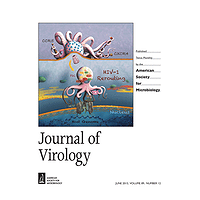Many RNA viruses encode a proof-reading deficient, low-fidelity RNA-dependent polymerase (RdRp), which generates genetically diverse populations that can adapt to changing environments and thwart antiviral therapies. 3D(pol), the RdRp of the foot-and-mouth disease virus (FMDV), is responsible for replication of viral genomes. The 3D(pol) N terminus encodes a nuclear localization signal (NLS) sequence,M RKTKLAPT, important for import of the protein to host nucleus. Previous studies showed that substitutions at residues 18 and 20 of the NLS are defective in proper incorporation of nucleotides and RNA binding. Here, we use a systematic alanine scanning mutagenesis approach to understand the role of individual residues of the NLS in nuclear localization and nucleotide incorporation activities of 3D(pol). We identify two residues of 3D(pol) NLS, 119 and L21, that are important for the maintenance of enzyme fidelity. The 3D(pol) NLS alanine substitutions of T19 and L21 results in aberrant incorporation of nucleoside analogs, conferring a low fidelity phenotype of the enzyme. A molecular dynamics simulation of RNA- and mutagen (RTP)-bound 3D(pol) revealed that the T19 residue participates in a hydrogen bond network, including D165 in motif F and R416 at the C terminus of the FMDV 3D(pol) and RNA template-primer. Based on these findings and previous studies, we conclude that at least the first six residues of the MRKTKLAPT sequence motif play a vital role in the maintenance of faithful RNA synthesis activity (fidelity) of FMDV 3D(pol), suggesting that the role of the NLS motif in similar viral polymerases needs to be revisited.IMPORTANCE In this study, we employed genetic and molecular dynamics approaches to analyze the role of individual amino acids of the FMDV 3D(pol) nuclear localization signal (NLS). The NLS residues were mutated to alanine using a type A full-genome cDNA clone, and the virus progeny was analyzed for defects in growth and in competition with the parental virus. We identified two mutants in 3D(pol), T19A and L21A, that exhibited high rate of mutation, were sensitive to nucleotide analogs, and displayed reduced replicative fitness compared to the parental virus. Using molecular dynamics simulation, we demonstrated that residues T19 and L21 played a role in the structural configuration of the interaction network at the 3D(pol) palm subdomain. Cumulatively, our data suggest that the T19 and L21 3D(pol) amino acids are important for maintaining the fidelity of the FMDV polymerase and ensuring faithful replication of the FMDV genome.

Residues within the Foot-and-Mouth Disease Virus 3D(pol) Nuclear Localization Signal Affect Polymerase Fidelity
Review badges
0 pre-pub reviews
0 post-pub reviews


